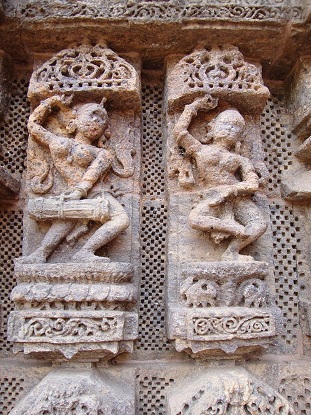Dancers are easy to spot. Almost anyone can tell a dancer apart from a crowd. I think it’s because of the way we stand, albeit our stances vary by dance form.
So when someone asks me about my hobbies, their reply to my answer is usually “I guessed you were a dancer from the way you were standing.” It’s nice that people recognize the performers of this art, but then a problem arises with the next question:
“What kind of dance do you do?”
This simple question doesn’t seem so much like a problem; it’s a well-intentioned question to which I give my customary answer. Throughout the course of my 12 years of dancing, I have been trained in hip-hop to modern to Odissi. Yes, Odissi.
Odissi is not usually an expected response and it earns me some puzzled looks. Of course, I’m used to it, and as a dancer I consider it part of my job to educate people about the different styles of dance.
Most people who are not of South Asian descent aren’t really aware of this classical dance, which originated in the eastern region of India. Their exposure to the Indian arts is fairly limited to Bollywood, which mainly shows the classical dance forms of Kathak and Bharatanatyam, so I continue my explanation of the ancient dance form of Odissi.
![Augustus Binu [CC BY-SA 4.0], via Wikimedia Commons](http://theaerogram.com/wp-content/uploads/2017/06/tribhanga1.jpg)
Odissi. The dance form originating more than 2000 years ago as told in the Natya Shastra. The dance form which adorns the walls of the Konark Sun Temple, where carved dancers pose in tribhanga (the three bends), an exclusive characteristic which highlights the human figure and its bends at the neck, torso, and knee. The dance form which illustrates Lord Jagannath, dedicatee of the temple of Puri. The dance form performed in temples throughout the state of Orissa. Perhaps Odissi remained hidden in those very same time-honored temples.

But why is it so hidden? Why do Odissi dancers — although we have no problem doing so — continually have to advocate for our dance? Does it really seem fair that such a preeminent dance form throughout the history of India has not garnered any name because the Bollywood industry has failed to give it a platform?
As a dancer, I also share with other South Asians in the diaspora what Odissi is. On the numerous Instagram dance accounts I follow, the ratio of Odissi pictures to pictures of other classical Indian dance forms is exceptionally low, if even existent at all.
Who’s to blame for this gap in knowledge in our very own community? We certainly cannot place total blame on Bollywood. So that leaves the answer to be more than a little obscure. It’s no one’s fault, but it’s everyone’s fault. Perhaps it is Orissa’s fault for failing to spread our beautiful culture. Perhaps it is the film industry for only glamorizing certain forms of dance. Perhaps it is the fault of colonization, which near eliminated this fiercely vital piece of Indian heritage.
Or maybe it is our fault as Indians, for failing to dig deeper into the entirety of our culture — for not being aware and for not making others aware. Odissi may just be another one of the many classical Indian dance forms, but ignorance of it symbolizes ignorance of numerous other aspects of India’s culture.
* * *
Adishree Nayak is a rising senior at Winston Churchill High School in Potomac, Maryland. Besides her passion for writing and dancing, she loves feminism, fitness, and food.












